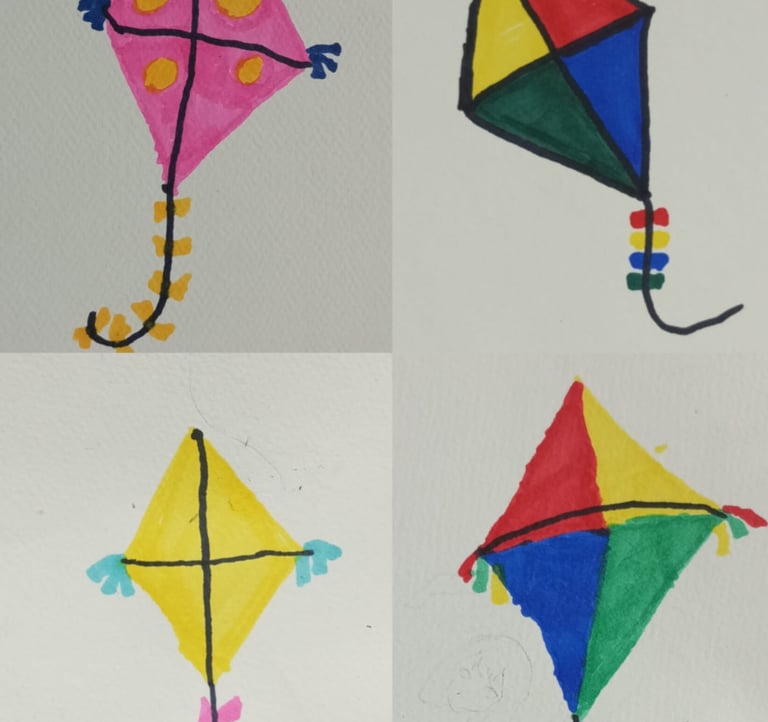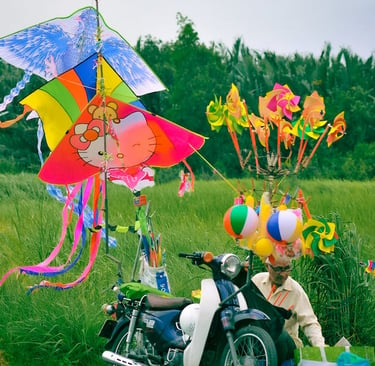Basant - The beauty of Spring
Basant, often referred to as the "Festival of Kites," is a centuries-old tradition that paints the skies of South Asia with a riot of colors. Rooted in cultural richness and fervent enthusiasm, this springtime celebration holds a special place in the hearts of millions. From the bustling streets of Lahore in Pakistan to the vibrant neighborhoods of Delhi in India, Basant brings communities together for a joyous and spirited spectacle that transcends borders.
Historical Significance:
The origins of Basant can be traced back to ancient times, with its roots deeply embedded in the cultural fabric of the Indian subcontinent. The festival is historically associated with the arrival of spring, symbolizing the triumph of light over darkness and the renewal of life. Celebrated predominantly by Hindus, Sikhs, and Muslims, Basant transcends religious boundaries, becoming a unifying force that binds communities.
The Colorful Canvas of the Sky:
Basant is synonymous with the art of kite flying, turning the sky into a mesmerizing canvas of vibrant hues and intricate patterns. Weeks leading up to the festival, markets buzz with activity as enthusiasts purchase kites of all sizes and colors. Rooftops become the battleground for friendly duels as skillful kite flyers engage in exhilarating contests, showcasing their mastery in maneuvering kites to cut the strings of their opponents.
The atmosphere becomes charged with excitement as the sky is filled with kites of all shapes and sizes, from the traditional diamond-shaped "patang" to more intricate designs. The artistry involved in creating and flying kites has evolved over the years, with families passing down techniques from generation to generations.



Basant Celebrations Across Borders:
While Basant has its deepest roots in the heart of the Indian subcontinent, its spirit has transcended geographical boundaries. Lahore, in particular, is renowned for hosting one of the most grandiose Basant celebrations in the world. The city transforms into a kaleidoscope of colors as locals and tourists alike take to the rooftops to partake in the festivities. The joyous sounds of dhol beats, laughter, and the swishing of kites create an atmosphere of infectious merriment.
In Delhi, the narrow lanes of Old Delhi come alive with the spirit of Basant. Kite sellers line the streets, and families gather on terraces to engage in friendly kite-flying competitions. The festival has become a cultural phenomenon, attracting people from various walks of life to revel in the shared joy of kite flying.
Cultural Traditions and Rituals:
Beyond the adrenaline-pumping kite battles, Basant is steeped in cultural rituals and traditions. People don traditional attires, with many choosing to wear yellow, symbolizing the blossoming mustard flowers that mark the arrival of spring. Families come together for special meals, and sweets like sesame and jaggery delicacies are shared among neighbors and friends.
In some regions, Basant Panchami, the day on which Basant is often celebrated, holds religious significance. Devotees visit temples and gurdwaras to seek blessings for a prosperous and joyful year ahead. The festival, therefore, becomes a harmonious blend of cultural revelry and spiritual observances.
Conclusion:
Basant, with its roots deeply entrenched in the cultural history of South Asia, continues to be a celebration that captures the imagination of millions. It is a testament to the resilience of cultural traditions, evolving over the years while retaining its essence. As communities come together to fly kites, share laughter, and revel in the spirit of camaraderie, Basant stands as a vibrant and living testament to the rich tapestry of diversity that defines the Indian subcontinent. In navigating the challenges, there lies an opportunity to preserve the cultural heritage of Basant while fostering a safe and environmentally conscious celebration for generations to come.
Challenges and Controversies:
In recent years, Basant has faced challenges and controversies, particularly regarding safety concerns associated with kite flying. The use of sharp strings, often coated with glass or chemicals for added strength, has led to injuries and even fatalities. Authorities in some regions have imposed restrictions on the festival to ensure public safety.
Additionally, concerns have been raised about the impact of the festival on the environment, as the remnants of thousands of discarded kites pose a threat to wildlife and the ecosystem. These challenges have sparked debates about finding a balance between preserving cultural traditions and addressing safety and environmental concerns.


Address
Soan Garden, Islamabad
Pakistan
Contacts
WhatsApp: +92-321-9012647
Email: shafqat@foodandfestivals.com